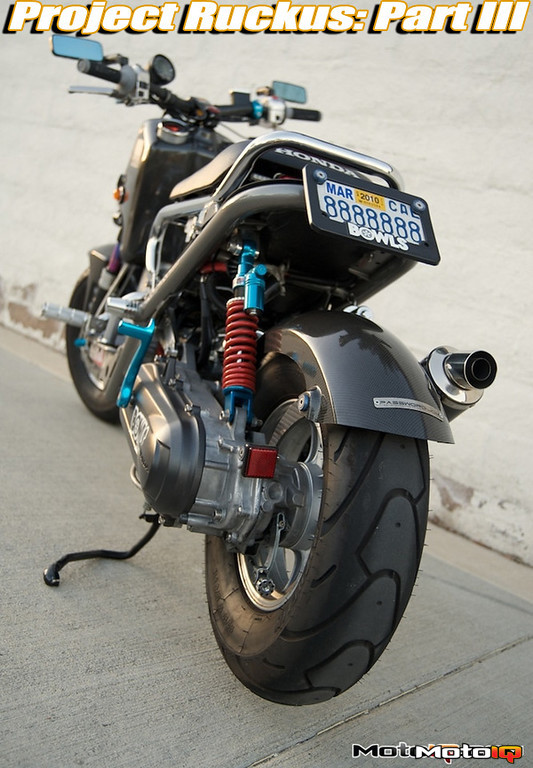,
 |
| The other side of the Polini variator reveals the ramps with the rollers in them. Centrifugal force causes the rollers to be flung outward where they roll up the ramps against the back plate, forcing the variator outward. Tuning the variator involves chagning the rollers with ones of different weight. |
A performance variator like the Polini has ramps shaped to keep the pulley in a lower ratio position longer for improved acceleration. The Polini also has a bigger outer diameter than stock so high gear is actually higher allowing for a higher top speed. The variator is tuned by using different weight rollers, lighter rollers stay in the low ratio position longer and have better acceleration; however they might not have enough centrifugal force to move the belt all the way up the pulley. Heavier rollers can move the belt higher on the pulley but also cause the variator to upshift faster, slowing acceleration. Tuning the variator for the rider’s weight, the engine's state of tune and preference is critical for getting the most out of any scooter.
 |
| We used small amounts of Malossi variator grease on the rollers. |
The Polini variator comes with 5.5 and 6.5 gram rollers but these rollers have a bad reputation for wearing very quickly, often within a few hundred miles. They are also soft and tend to not slide too well. We never bothered to use them; instead we got an assortment of higher quality Daytona rollers from Battlescooter. We tried 4.5, 5, 5.5, 6 and 6.5 gram rollers before settling on the 6 gram parts. These seemed to give us the best compromise between acceleration and top speed. While playing with weights, we lubed the variator up internally with Malossi variator grease. This really isn’t necessary and we could not tell any difference in performance but we thought we would give it a shot. Most Total Ruckus forum members seem to like 5.5 or 6 gram rollers so we were right in line with what worked well for others.
 |
 |
| The quick way to remove the variator for tuning is to first pinch the belt to take the load off of the variator, then remove the crank nut with an impact. Be sure to turn the torque of the impact down so you don't strip out the crank when tightening the nut. Also be sure that you don't crush the toothed washer on the crank splines when reassembling things as this will ruin the crank. |
While we installed the new variator, we also installed a Daytona Kevlar belt from Bowls. Strangely a belt affects performance in a scooter’s CVT transmission as well. The ultra high strength Kevlar allows Daytona to make a belt that is much thinner than stock. This helps performance in several ways. The thinner belt can sit lower in the variator in the low gear position, effectively making a lower faster gear ratio out of the hole. The thinner belt is also supple and wastes less power than the thick multi ply stock belt.
 |
 |
| The Daytona Kevlar belt improves acceleration by being thinner. It can sit lower in the variator out of the hole giving a lower gear ratio. It is thinner and more supple so it generates less heat and wastes less power as well. |


